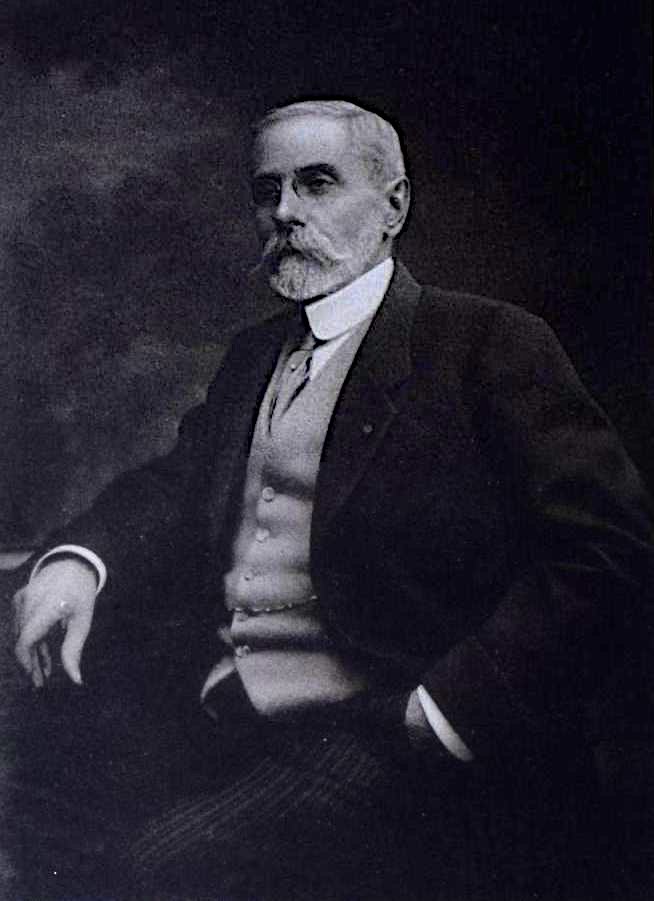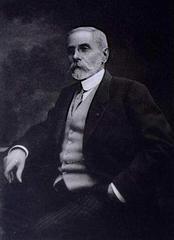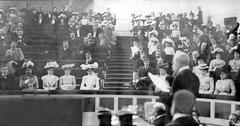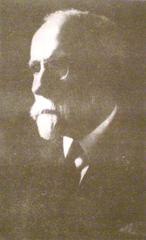
Paul Groussac Buenos Aires: Visiting Hours, Tickets, and Historical Sites Guide
Date: 14/06/2025
Introduction
Buenos Aires, renowned for its vibrant cultural and intellectual life, is home to the Biblioteca Nacional Mariano Moreno, a monument to Argentina’s literary journey and the transformative legacy of Paul Groussac. As director for 44 years, Groussac—a French-born intellectual—modernized the institution and expanded its collections, making it a beacon of Argentine identity and scholarship. This guide provides a comprehensive overview for visitors, covering the library’s history, architectural highlights, hours, ticketing, accessibility, nearby attractions, and curated itineraries tracing Groussac’s enduring influence.
For official updates and detailed planning, consult the Biblioteca Nacional website and related cultural resources (Infobae on Paul Groussac).
Contents
- History and Cultural Importance
- Architectural Highlights
- Visiting Hours and Tickets
- Accessibility and Visitor Services
- Exhibitions and Special Collections
- Nearby Attractions
- Tips for Visitors
- Frequently Asked Questions (FAQ)
- Paul Groussac’s Legacy
- Tracing Groussac’s Footsteps: Historical Sites in Buenos Aires
- Curated Itinerary
- Conclusion
History and Cultural Importance
Founded in 1810 by Mariano Moreno, the National Library of Argentina has evolved into the nation’s foremost repository of literary, historical, and cultural treasures. Paul Groussac, who served as director from 1885 to 1929, was instrumental in modernizing the library, expanding its collections, and fostering intellectual debate. Under his leadership, the library became a symbol of Argentina’s quest for cultural identity and modernization, housing manuscripts, rare books, and vital historical documents (Infobae Article).
Architectural Highlights
The Biblioteca Nacional’s current building, inaugurated in 1992 in the Recoleta neighborhood, is a renowned example of brutalist architecture by Clorindo Testa. Its bold concrete structure houses panoramic reading rooms and exhibition spaces. The fifth-floor reading room offers sweeping views over Buenos Aires, including prominent avenues, parks, and the Río de la Plata, providing a unique environment for study and reflection.
Visiting Hours and Tickets
- Location: Agüero 2502, Recoleta, Buenos Aires
- Opening Hours:
- Tuesday to Friday: 11:00 AM – 7:00 PM
- Saturday and Sunday: 12:00 PM – 6:00 PM
- Closed Monday and national holidays
- Admission: Free entry for all visitors
- Special Exhibitions or Tours: Some events or guided tours may require prior registration or tickets (Official Site).
- Reading Room Access: Registration with a valid ID is required.
Always verify current hours and event details on the Biblioteca Nacional website.
Accessibility and Visitor Services
The Biblioteca Nacional is fully equipped for visitors with disabilities, offering ramps, elevators, and accessible restrooms. Guided tours in Spanish and English can be booked in advance ([email protected] or +54 11 4808-6000). Audio guides and multilingual brochures are available to enhance your visit. Facilities include reading rooms, a café, and free Wi-Fi.
Exhibitions and Special Collections
Regular exhibitions showcase rare manuscripts, early printed books, and thematic displays on Argentine literature and culture. The library’s special collections feature over 11,000 volumes from the 16th and 17th centuries, including a page from the Gutenberg Bible. Access to archival materials for research is available by appointment.
Nearby Attractions
Set in the elegant Recoleta neighborhood, the Biblioteca Nacional is close to:
- Recoleta Cemetery: Resting place of many notable Argentines, including Groussac
- Museo Nacional de Bellas Artes: Argentina’s premier art museum
- Centro Cultural Recoleta: Contemporary art and cultural events
- Historic Cafés: Café Tortoni and Café La Puerto Rico—haunts of literary and artistic circles
Walking tours easily combine these destinations for a rich cultural experience.
Tips for Visitors
- Arrive Early: Mornings are less crowded, especially in reading rooms.
- Photography: Allowed in public areas, but avoid flash and tripods.
- Events: Check the event calendar for lectures, exhibitions, and festivals.
- Language: Most signage is in Spanish; a translation app is helpful.
- Transport: The library is accessible via Subte Line D (Agüero station), taxis, or ride-sharing services.
Frequently Asked Questions (FAQ)
Q: Is there an entrance fee?
A: Entry is free; special events may require tickets.
Q: Are guided tours available?
A: Yes, in Spanish and English—book in advance via the library’s website or contact details.
Q: Is the library accessible for people with disabilities?
A: Yes, with ramps, elevators, and accessible facilities.
Q: Can I take photos?
A: Photography is permitted in most areas; flash and tripods may be restricted.
Q: Can I use the reading rooms?
A: Yes, with valid ID registration.
Paul Groussac’s Legacy
Paul Groussac (1848–1929), born in Toulouse, France, became a central figure in Argentine literary and academic life. His vision and reforms at the Biblioteca Nacional positioned it as a leading institution in Latin America. Groussac was a prolific writer, editor, and founder of influential journals such as La Biblioteca and Anales de la Biblioteca, which shaped national scholarship. His cosmopolitan outlook bridged European and Argentine traditions, leaving a legacy celebrated across Buenos Aires (Infobae Article).
Tracing Groussac’s Footsteps: Historical Sites in Buenos Aires
Biblioteca Nacional Mariano Moreno
- Address: Agüero 2502, Recoleta
- Hours: See above
- Highlights: Groussac’s portrait, memorabilia, permanent and rotating literary exhibitions, rooftop terrace views
- Accessibility: Fully accessible
Former Site of the National Library
- Address: México 564, Monserrat
- Hours: Limited; special events or by arrangement
- Significance: Groussac’s directorship era building; original reading rooms and façade
- Tips: Schedule in advance; combine with tours of Monserrat’s historic core
Colegio Nacional de Buenos Aires
- Address: Bolívar 263, Monserrat
- Significance: Groussac taught here; landmark of Argentine education
- Hours: Public access during cultural events (see school website)
Literary Cafés
- Café Tortoni: Avenida de Mayo 825; open daily, historic Belle Époque décor
- Café La Puerto Rico: Adolfo Alsina 416; open daily
- Significance: Groussac and other intellectuals’ meeting places
- Tips: Check for events and poetry readings
Recoleta Cemetery
- Address: Junín 1760, Recoleta
- Hours: Daily, 7:00 AM – 5:30 PM (Official Site)
- Significance: Groussac’s tomb; guided tours available
Curated Itinerary: Tracing Paul Groussac’s Footsteps
Day 1: Recoleta & National Library
- Morning: Biblioteca Nacional Mariano Moreno (exhibitions, rooftop views)
- Afternoon: Recoleta Cemetery (visit Groussac’s tomb)
- Evening: Literary café experience
Day 2: Monserrat
- Morning: Former National Library site and Colegio Nacional de Buenos Aires
- Afternoon: Explore Monserrat’s historic landmarks and cafés
Day 3: Literary Buenos Aires
- Morning: Bookstores, such as El Ateneo Grand Splendid
- Afternoon: Optional guided tour on the city’s intellectual history
Practical Visitor Tips
- Best Time: October–November and February–April for pleasant weather and cultural activities (Secrets of Buenos Aires)
- Getting Around: Buenos Aires is walkable; taxis, Uber, and Subte metro are convenient (Short Girl on Tour)
- Safety: Practice standard urban safety, especially at night (Sol Salute)
- Language: Spanish is predominant; bilingual guides enhance experiences (Reddit)
- Dress Code: Smart-casual for cafés; comfortable shoes for tours
Conclusion and Recommendations
Exploring Buenos Aires through the lens of Paul Groussac’s legacy—whether at the Biblioteca Nacional, historic cafés, or the city’s literary landmarks—offers an immersive journey into Argentina’s cultural and intellectual heritage. Groussac’s influence is felt not only in the library’s extensive collections and progressive mission but also in the vibrant intellectual life that defines Buenos Aires today.
To make the most of your visit, use resources like the Audiala app for curated cultural tours and stay updated with official channels for events and exhibitions. Whether you’re passionate about literature, architecture, or history, following Groussac’s footsteps will deepen your appreciation for Buenos Aires’ enduring spirit.
Sources and Further Reading
- Biblioteca Nacional Official Website
- Infobae Article on Paul Groussac
- The Thorough Tripper - Buenos Aires Travel Tips
- Wanderlust Photos Blog - Buenos Aires Tourist Guide
- Secrets of Buenos Aires
- Short Girl on Tour
- Sol Salute
- Recoleta Cemetery Official Site
- Colegio Nacional de Buenos Aires
- Café Tortoni
































































































































































